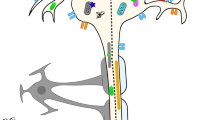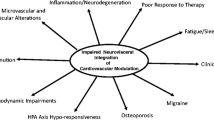Abstract
Objective
Neuroinflammation contributes to motor neuron degeneration in ALS. Thalidomide (THL) shows potent anti-inflammatory properties and increased the lifespan in ALS transgenic mice. Thalidomide was therefore suggested as atherapeutic intervention for the treatment of ALS.We conducted a pilot, randomized clinical trial of THL in patients with ALS to assess safety, feasibility, and preliminary estimates of treatment efficacy.
Methods
Patients were randomized to THL in combination with riluzole (n = 18) or riluzole alone (n = 19). THL was initiated at 100 mg per day for 6 weeks. Thereafter, the dose was increased every week by 50 mg until reaching the dose of 400 mg per day and planned to continue for another 12 weeks.
Results
Within 12 weeks of THL treatment, nine THL patients (50%) developed bradycardia defined as a heart rate below 60 beats per minute (bpm) and ranged from 46 to 59 bpm. Mean heart rate dropped by 17 bpm with THL treatment. Severe symptomatic bradycardia of 30 bpm occurred in one patient. A further patient died from sudden unexpected death. The study was terminated prematurely for safety concerns. The secondary outcome variables showed similar results for both groups.
Conclusion
Bradycardia was the most common adverse event of THL treatment in ALS. THL-related bradycardia does not appear to be ALS-specific. It is conceivable, however, that the unexpected frequency and severity of THL-induced bradycardia may be related to subclinical involvement of the autonomic nervous system in ALS. The cardiac toxicity discourages further clinical trials and compassionate use of THL in ALS. ClinicalTrials.gov Identifier: NCT00231140.
Similar content being viewed by others
References
McGeer PL,McGeer EG (2002) Inflammatory processes in amyotrophic lateral sclerosis. Muscle Nerve 26:459–470
Weydt P, Yuen EC, Ransom BR, Moller T (2004) Increased cytotoxic potential of microglia from ALS-transgenic mice. Glia 48:179–182
Hensley K, Fedynyshyn J, Ferrell S, Floyd RA,Gordon B,Grammas P, Hamdheydari L, Mhatre M,Mou S, Pye QN, Stewart C,West M,West S, Williamson KS (2003) Message and protein-level elevation of tumor necrosis factor alpha (TNF alpha) and TNF alpha-modulating cytokines in spinal cords of the G93A-SOD1 mouse model for amyotrophic lateral sclerosis. Neurobiol Dis 14:74–80
Franks ME, Macpherson GR, Figg WD (2004) Thalidomide. Lancet 363:1802–1811
Kiaei M, Petri S, Kipiani K, Gardian G, Choi DK, Chen J, Calingasan NY, Schafer P, Muller GW, Stewart C, Hensley K, Beal MF (2006) Thalidomide and lenalidomide extend survival in a transgenic mouse model of amyotrophic lateral sclerosis. J Neurosci 26:2467–2473
Brooks BR,Miller RG, Swash M, Munsat TL.World Federation of Neurology Research Group on Motor Neuron Diseases (2000) El Escorial revisited: revised criteria for the diagnosis of amyotrophic lateral sclerosis. Amyotroph Lateral Scler Other Motor Neuron Disord 1:293–299
Kaufmann P, Levy G, Thompson JL, Delbene ML, Battista V,Gordon PH, Rowland LP, Levin B, Mitsumoto H (2005) The ALS-FRS-R predicts survival time in an ALS clinic population. Neurology 64:38–43
Merkies IS, Schmitz PI, van der Meche FG, van Doorn PA (2000) Psychometric evaluation of a new sensory scale in immune-mediated polyneuropathies. Inflammatory Neuropathy Cause and Treatment (INCAT) Group. Neurology 54:943–949
Johns MW (1991) A new method for measuring daytime sleepiness: the Epworth sleepiness scale. Sleep 14:540–545
Singhal S, Mehta J (2001) Thalidomide in cancer potential uses and limitations. BioDrugs 15:163–172
Fahdi IE, Gaddam V, Saucedo JF, Kishan CV, Vyas K, Deneke MG, Razek H, Thorn B, Bissett JK, Anaissie EJ, Barlogie B, Mehta JL (2004) Bradycardia during therapy for multiple myeloma with thalidomide. Am J Cardiol 93:1052–1055
Kaur A,Yu SS, Lee AJ, Chiao TB (2003) Thalidomide-induced sinus bradycardia. Ann Pharmacother 37:1040–1043
Coutsuvelis J, Corallo CE (2004) Thalidomide-induced bradycardia and its management. Med J Aust 180:366–367
Baltadzhieva R, Gurevich T, Korczyn AD (2005) Autonomic impairment in amyotrophic lateral sclerosis. Curr Opin Neurol 18:487–493
Shimizu T, Hayashi H, Kato S, Hayashi M, Tanabe H, Oda M (1994) Circulatory collapse and sudden death in respirator- dependent amyotrophic lateral sclerosis. J Neurol Sci 124:45–55
Pisano F, Miscio G,Mazzuero G, Lanfranchi P, Colombo R, Pinelli P (1995) Decreased heart rate variability in amyotrophic lateral sclerosis. Muscle Nerve 18:1225–1231
Asai H, Hirano M, Udaka F, Shimada K, Oda M, Kubori T, Nishinaka K, Tsujimura T, Izumi Y, Konishi N, Matsumoto S, Kameyama M, Ueno S (2007) Sympathetic disturbances increase risk of sudden cardiac arrest in sporadic ALS. J Neurol Sci 254:78–83
Author information
Authors and Affiliations
Corresponding author
Additional information
Disclosures Dr. Meyer reports receiving grant support from Pharmion Germany, support for clinical trials through research support by contract to his institution from Eli Lilly, TEVA Pharmaceuticals, Novartis, ONO Pharmaceuticals, and ExonHit, and speaking fees from TEVA Pharmaceuticals, fees for attending advisory board from Celgene, and consulting fees from Merz Pharmaceuticals. Dr. Münch reports receiving support for clinical trials through research support by contract to his institution from Bayer and Genzyme, and fees for consulting and attending advisory board from Genzyme.
Rights and permissions
About this article
Cite this article
Meyer, T., Maier, A., Borisow, N. et al. Thalidomide causes sinus bradycardia in ALS. J Neurol 255, 587–591 (2008). https://doi.org/10.1007/s00415-008-0756-3
Received:
Revised:
Accepted:
Published:
Issue Date:
DOI: https://doi.org/10.1007/s00415-008-0756-3




